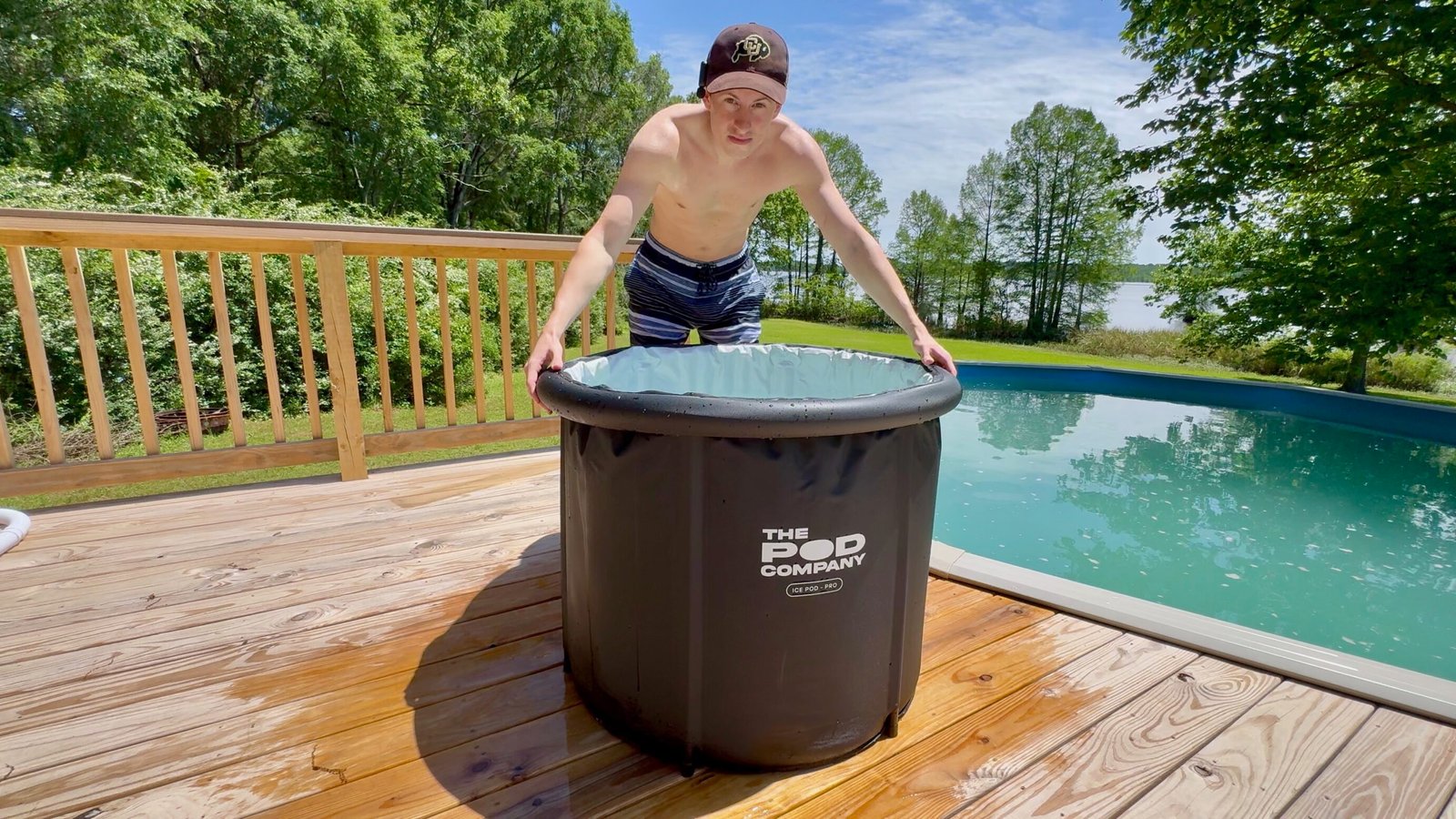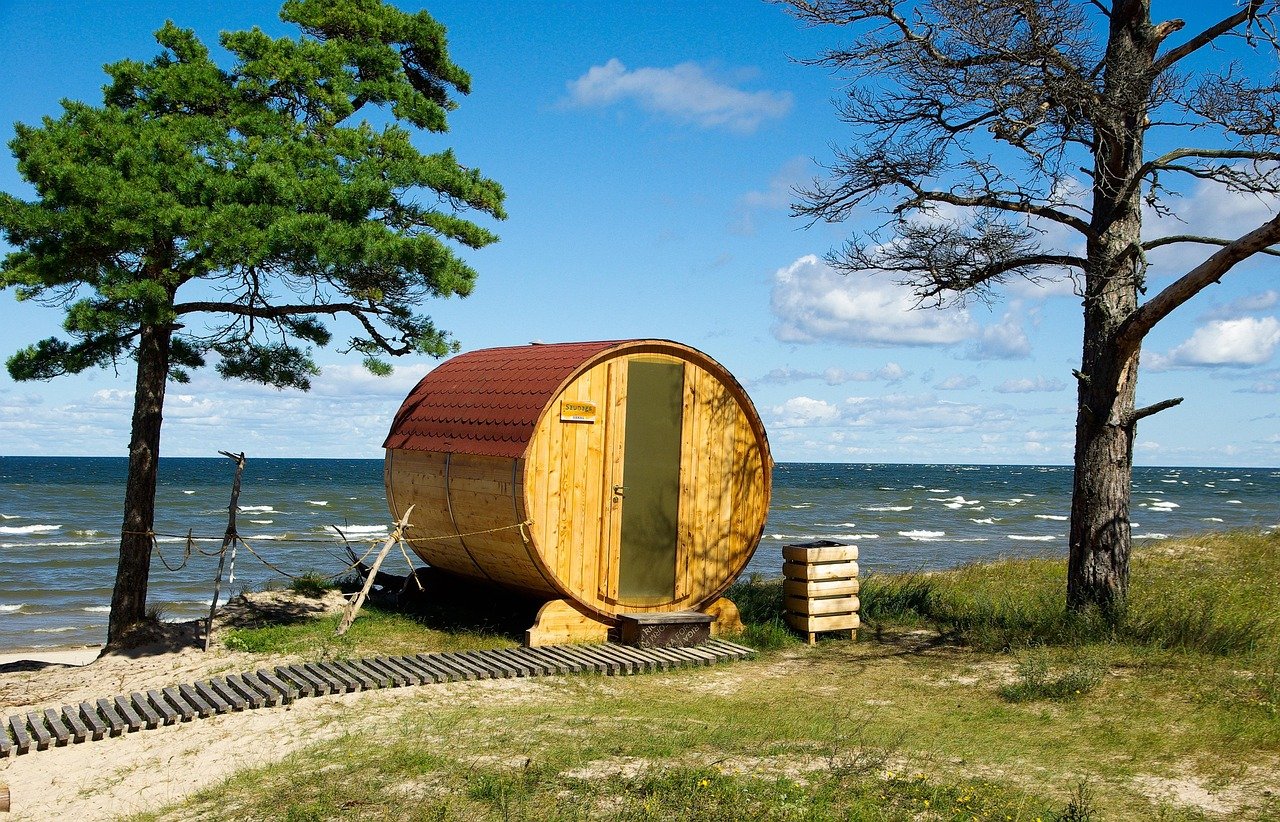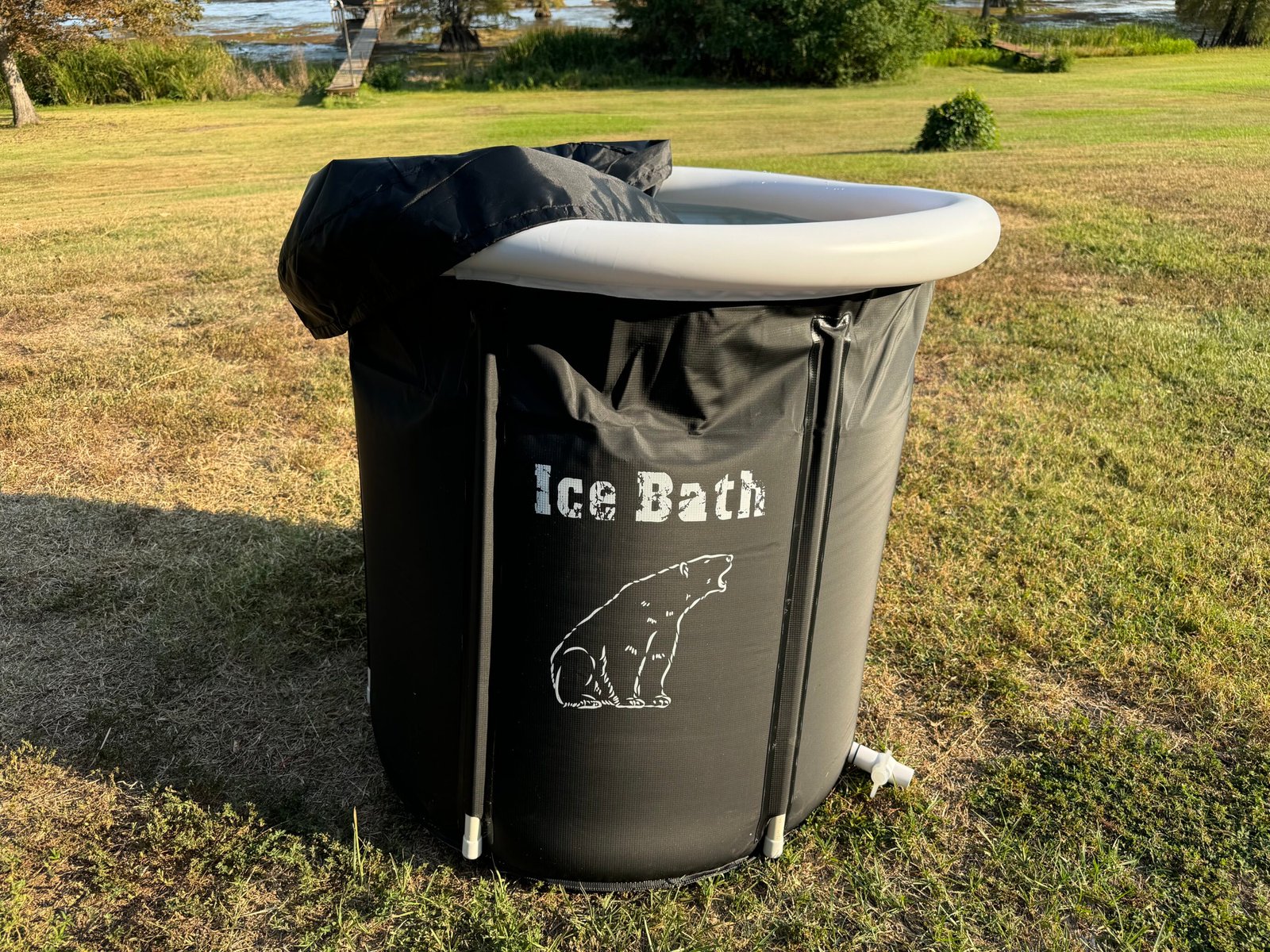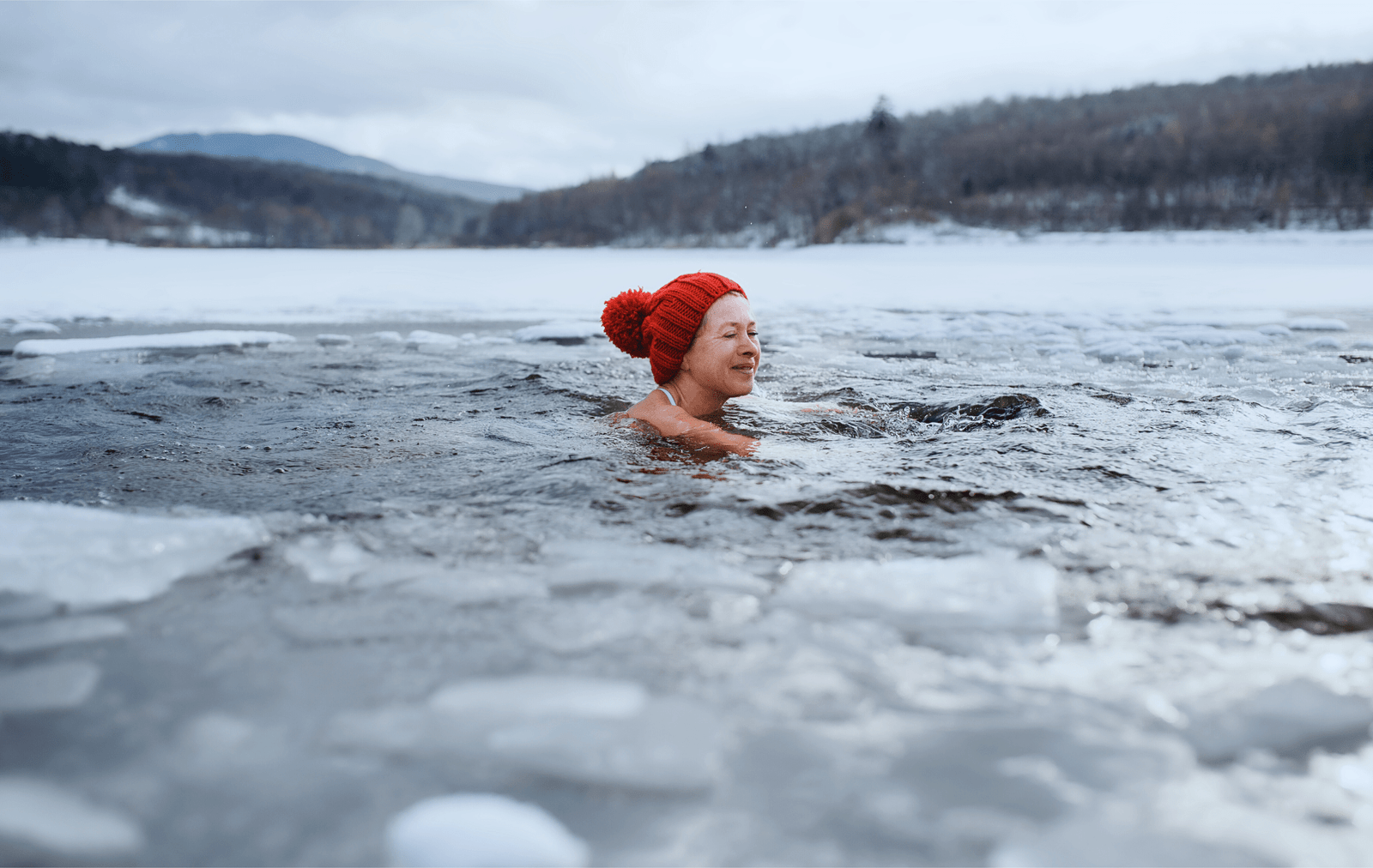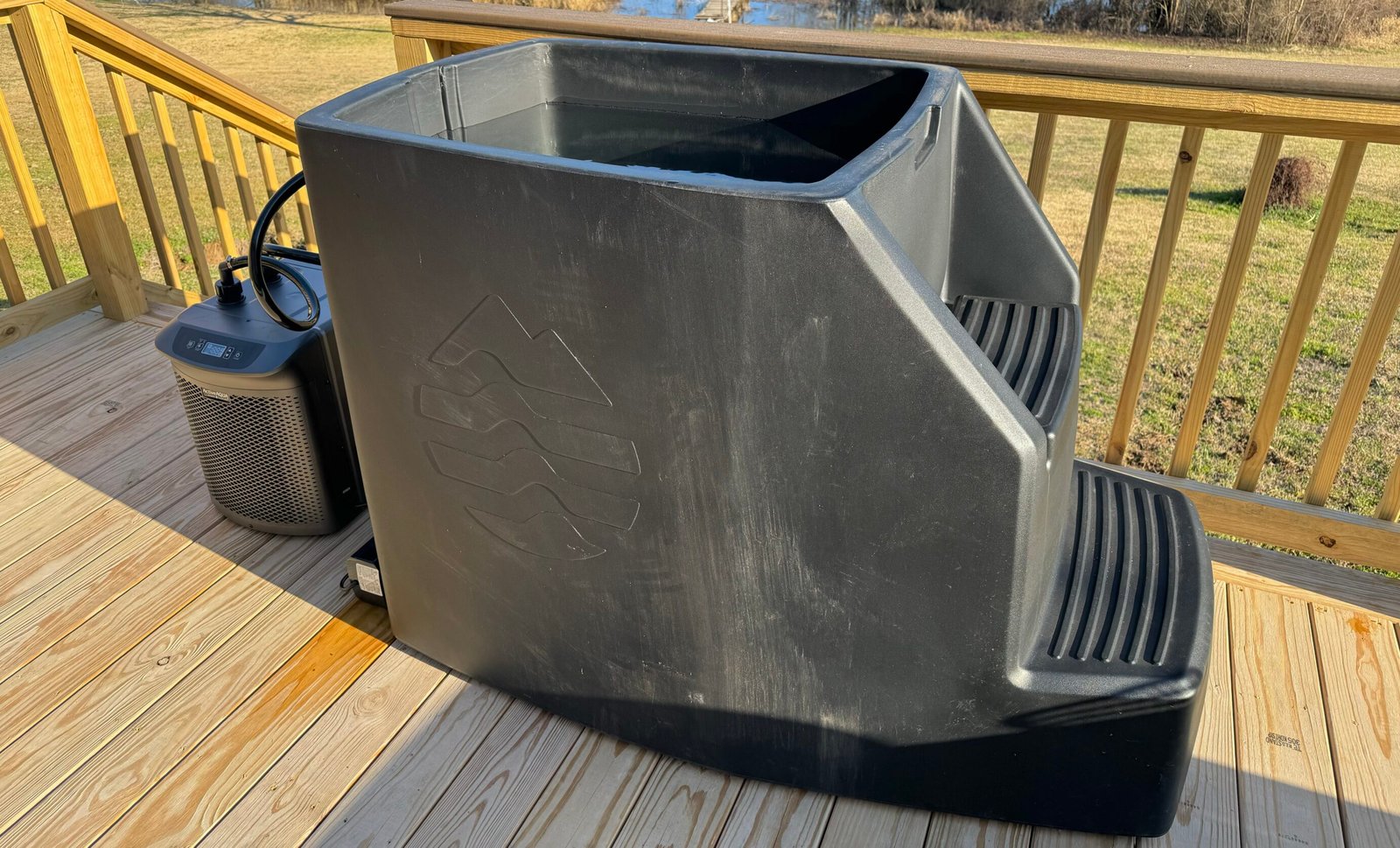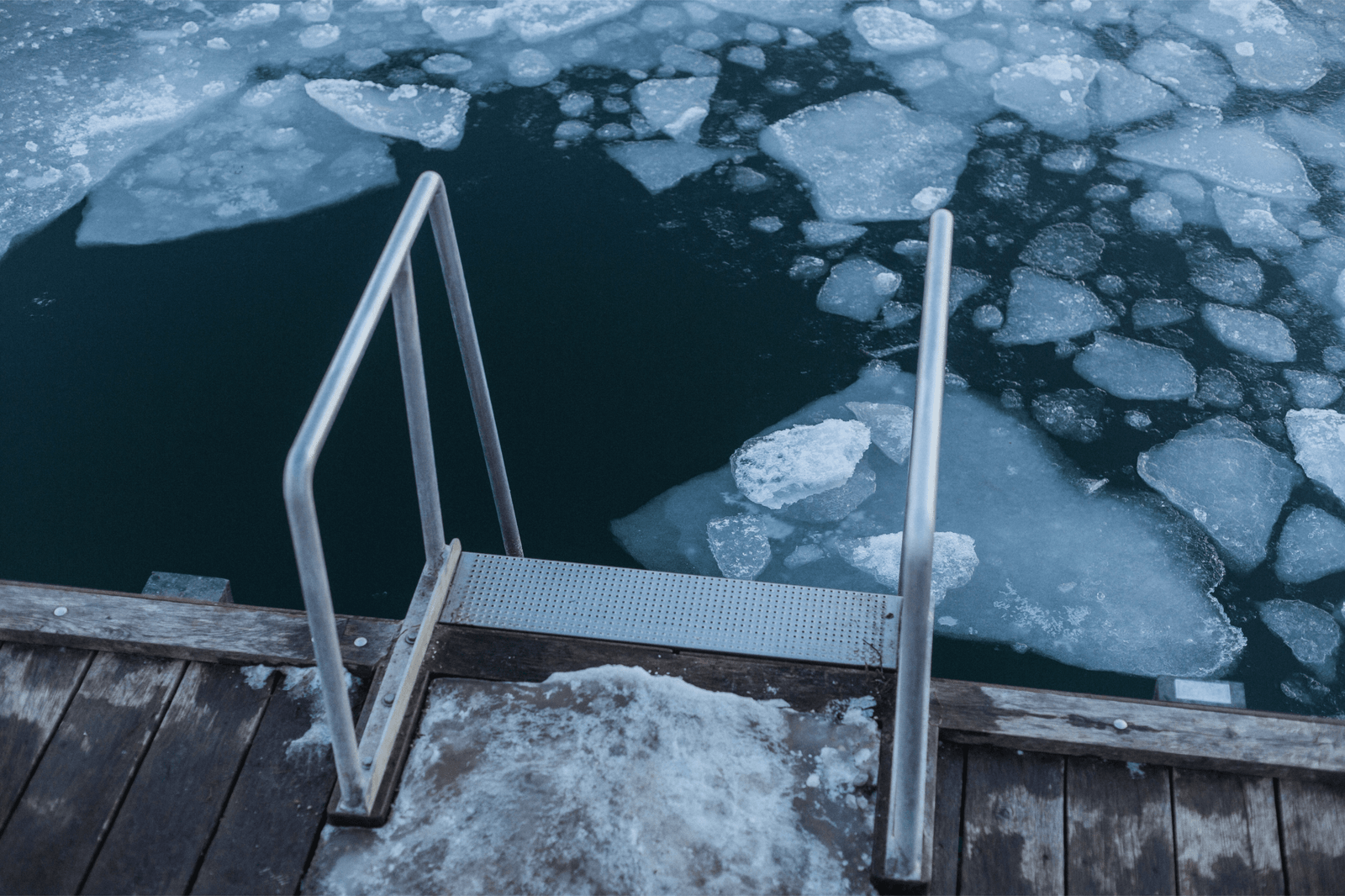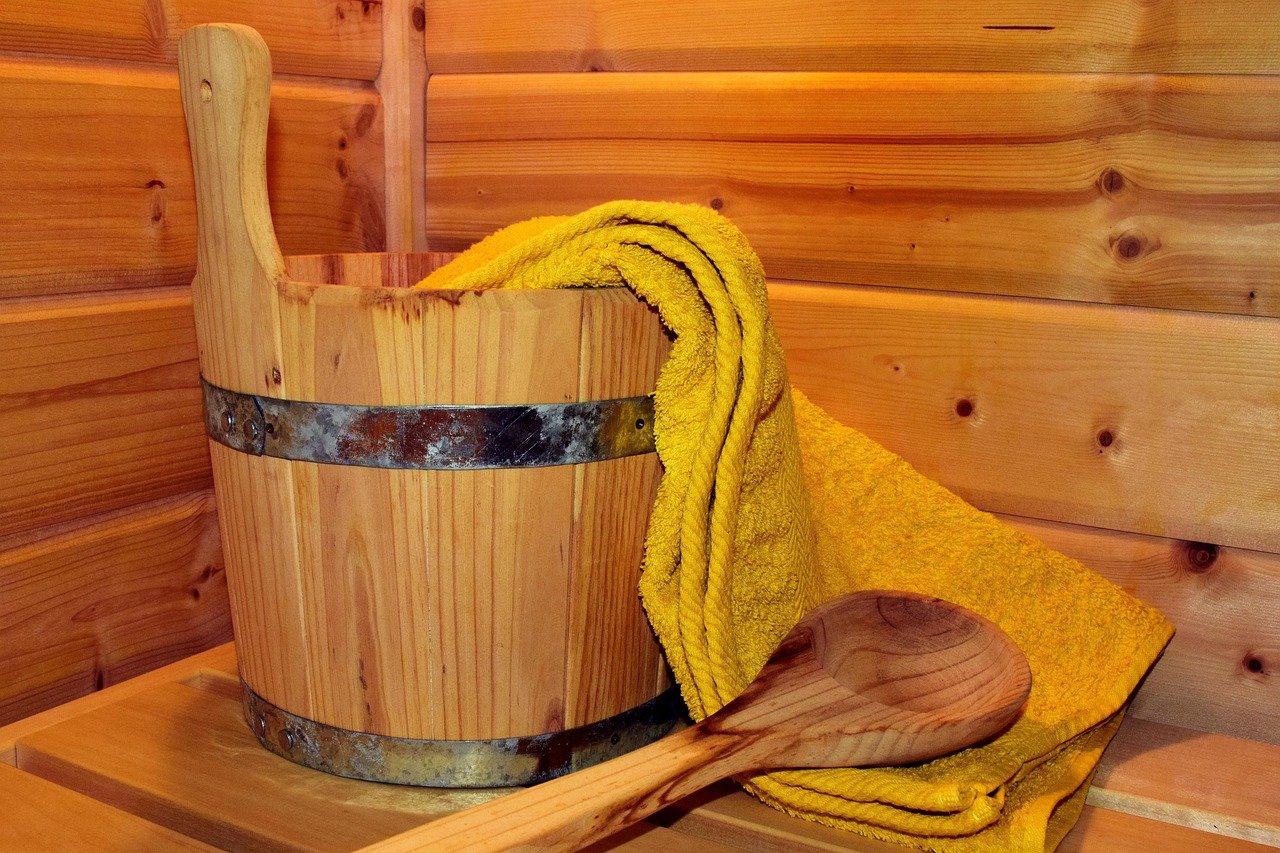6 Best Breathing Techniques for Cold Plunge Mastery

Breathing correctly in a cold plunge is like lacing up the right running shoes before a marathon—it’s fundamental. Proper breathing helps you relax, stay calm, and remain present, even in the discomfort of icy water.
Variables like time of day, water temperature, duration, and even the people around you can influence your breathing. Mastering the right breathing techniques can transform your cold plunging experience, giving you the tools to stay focused, resilient, and in control.
Why breathing techniques matter in a cold plunge
Your body’s natural reaction to being submerged in cold water is to panic and go into fight-or-flight mode. Controlled breathing can take you out of that mode and allow you to experience the numerous benefits of the cold that you otherwise wouldn’t.
Best Breathing Techniques:
1. Best overall: Wim Hof Method
If you’ve heard of cold plunging, you’ve likely heard of Wim Hof, also known as the “Ice Man.” He created this method to overcome anxiety and has since inspired millions worldwide.
This technique is powerful but requires caution, as it involves controlled hyperventilation and breath-holding, which can lead to lightheadedness. Increasing oxygen capacity and prepping the body for endurance is ideal for anyone serious about cold exposure.
Instructions:
- Sit comfortably and take 30–40 deep breaths, inhaling fully through your nose or mouth and exhaling passively.
- After the last exhale, hold your breath until you feel the urge to breathe.
- Take a deep recovery breath, hold it for 15 seconds, and exhale.
- Repeat the cycle three to four times.
- After finishing, enter the cold plunge while maintaining steady, controlled breathing.
Benefits:
- Prepares the mind and body by reducing the shock response
- Improves focus and cold tolerance
- Boosts circulation and resilience
Important: This method can cause lightheadedness or fainting. Always practice sitting or lying down, and never be near water or while driving.
2. Best for beginners: Slow Nasal Breathing
Slow nasal breathing is exactly what it sounds like—breathing deeply and slowly through your nose. It’s the simplest way for beginners to manage the fight-or-flight response triggered by cold exposure.
This technique calms the nervous system, reduces shock, and promotes relaxation, making it perfect for beginners.
Instructions:
- Before entering the water, practice slow nasal breathing for 2–5 minutes, focusing on long exhales.
- During the plunge, inhale deeply through your nose and exhale slowly through your mouth.
Benefits:
- Reduces stress and anxiety
- Activates the parasympathetic nervous system
- Enhances focus and resilience
3. Best for mental focus: Box Breathing
Box breathing, or “square breathing,” involves four equal phases: inhale, hold, exhale, and pause. It’s great for people who are prone to overthinking and worrying. It forces structured rhythm to become your concentration instead of the cold.
Instructions:
- Once settled in the tub, Inhale through your nose for 4 seconds.
- Hold your breath for 4 seconds.
- Exhale through your mouth for 4 seconds.
- Pause for 4 seconds and repeat.
Benefits:
- Regulates the nervous system
- Improves mental clarity
- Helps you maintain steady breathing under stress
4. Best for relaxation: 4-7-8 breathing
An advanced version of box breathing, 4-7-8 breathing, requires more attention to detail. This method promotes relaxation, reduces anxiety, and helps you manage the stress of cold exposure.
Instructions:
- Once settled in the tub, inhale through your nose for 4 seconds.
- Hold your breath for 7 seconds.
- Exhale through your mouth for 8 seconds.
- Repeat throughout the session.
Benefits:
- Reduces stress and calms the mind
- Improves sleep quality
- Trains the body to respond better to stress
5. Best for daily cold plunging: pursed-lip breathing
This method builds on slow nasal breathing by adding a slight resistance during the exhale, which requires more focus. It’s simplicity ensures consistency for people who plunge multiple times a week.
It also helps control shortness of breath, so it’s a great technique to use when you first get into the cold plunge.
Instructions:
- Inhale deeply through your nose.
- Exhale slowly through pursed lips as if blowing out a candle.
- Ensure the exhale is longer than the inhale and repeat throughout the plunge.
Benefits:
- Lowers heart rate
- Reduces stress response
- Supports consistent practice for frequent plungers
6. Best for long plunges: Diaphragmatic breathing
Also called belly breathing, this method engages the diaphragm for deeper, more efficient breaths. It’s perfect for longer plunges because it increases lung capacity and helps you stay relaxed in cold water.
Instructions:
- Place one hand on your chest and the other on your abdomen.
- Inhale deeply through your nose, allowing your abdomen to rise while keeping your chest still.
- Exhale slowly through your mouth.
- Practice this technique before and during long plunges.
Benefits:
- Enhances oxygenation and circulation
- Calms the initial shock response
- Improves digestion and immune function
Mindfulness and Visualization
Combining mindful breathing with visualization makes the experience so much more enjoyable. Try visualizing your body adapting to the cold and the benefits unfolding (e.g., improved resilience or calmness). I recommend doing this before and during every plunge, especially if the cold water makes you nervous.
Drawbacks of improper breathing:
Failing to control your breath during a cold plunge means losing control of your mind and body. When your instincts take over, the fight-or-flight response kicks in, and the benefits of cold exposure are lost. Improper breathing can lead to:
- Hyperventilation: Rapid breathing reduces oxygen levels and makes it difficult to relax.
- Low Oxygen Levels: Shallow breathing limits oxygen intake, which increases discomfort and panic.
- Increased Stress: Uncontrolled breathing amplifies the shock response.
- Tense Muscles: Poor breathing makes the plunge harder to endure by keeping your body tense.
- Disorientation: Sudden or irregular breathing can lead to dizziness or confusion.
- Drowning: In extreme cases, improper breathing during cold exposure can be dangerous.
Without the right breathing techniques, your body will react defensively. Control your breathing to prevent the mental and physical benefits of cold water therapy from being undermined.
Benefits of proper breathing:
Mastering proper breathing before, during, and after a cold plunge makes the experience safer and amplifies the positive effects. Controlled breathing is essential for unlocking the full potential of cold water therapy.
Key benefits include:
- Calmness: Proper breathing helps override the fight-or-flight response.
- Decreased Anxiety: Deep, steady breaths activate the parasympathetic nervous system, reducing stress and anxiety.
- Improved Focus: Staying present with your breath sharpens your mental clarity.
- Enhanced Mental Resilience: Breathing through discomfort builds long-term mental toughness.
- Increased Oxygen Levels: Techniques like diaphragmatic or Wim Hof breathing optimize oxygen intake, which boosts energy and endurance.
- Higher Dopamine Levels: Cold exposure combined with controlled breathing triggers a natural dopamine release.
- Better Cold Tolerance: Consistent breathing regulates your body’s response to cold, making future plunges easier and more rewarding.
Integrating these breathing techniques into your routine ensures a safer and more rewarding outcome.
After the Plunge
After your plunge, warm up by exhaling longer than you inhale to slow down your heart rate. You can even practice humming to relax and help stabilize oxygen levels.
Avoid these common mistakes:
- Hyperventilating or taking shallow breaths before entering the water.
- Rushing into the plunge without focusing on breath control.
- Letting the cold shock cause erratic or panicked breathing.
- Setting your water chiller temperature too low.
Conclusion
Cold plunging is more than just getting into cold water. It’s about building discipline and resilience. Mastering your breath is key and all experienced plungers know its importance. Start with these techniques and see how they transform your experience.
Breathing techniques take time to perfect. Practice in a cold shower or during shorter plunges to build confidence before trying more intense cold exposure.
Do you have a favorite breathing method? Share it in the comments below!
Medical Disclaimer
The information contained in this post is for informational and educational purposes only. It is not intended to provide medical advice or to take the place of such advice or treatment from a personal physician. All readers/viewers of this content are advised to consult their doctors or qualified health professionals regarding specific health questions or before embarking on any new health or wellness routine, including saunas and cold plunging. Neither the author(s) nor the publisher of this content take responsibility for possible health consequences of any person or persons reading or following the information in this educational content. All viewers of this content, especially those taking prescription or over-the-counter medications, should consult their physicians before beginning any cold plunging routine or other health or wellness program.

